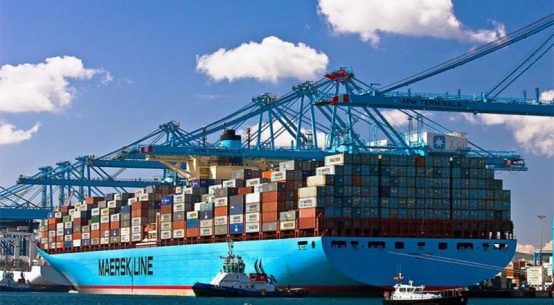
Theme: Teaming Up For Competitive Advantage

Nigeria, despite its natural endowment and positive prospects in economic development, is seriously confronted with the continuing problems of poverty and income inequality. Income inequality comes in two dimensions – the inequality among classes (or the poor becoming poorer and the rich becoming richer and inequality among regions (or the poor regions are being left behind by the fast-paced development of the richer urbanized regions).
The nation has not faired very well in economic development and most of this has been caused by lack of capacity building. People empowerment is indeed the correct approach to solving these twin problems of poverty and income inequity.
Cooperatives and other labour enterprises are among the major pillars of the people empowerment movement. This empowerment movement, which is now known as the civil society movement, aspires for a strong pro-people mixed economic society where the state, private and civil society sectors are cooperatively harnessed in the development efforts of the society.
Tackling poverty through trade: a challenge at multiple levels
There is a link between trade, growth, and poverty. Economies that are open to trade and investment tend to grow faster than closed ones. While economic growth alone cannot guarantee a sustained reduction in poverty and inequality, growth is a necessary condition for reducing poverty. However, in fact, many of the poorest countries, particularly those with heavy dependence on exports of primary commodities, do not participate in the benefits of economic integration. Their problem is not trade-induced impoverishment but, rather, facing exclusion from participating in global economic activity due to lack of capacity.

Competitive Advantages from Joint Exporting
Export joint ventures offer firms the opportunity to reduce costs by capturing economies of scale. Joint ventures also enable participating firms to spread risks. These benefits are likely to be greatest for small and medium-sized firms that are either new to exporting or have limited export experience. However, firms of all sizes and levels of international business experience can use joint exporting to reduce per unit export costs and develop proactive export strategies that may not be feasible for individual exporters. The ability to reduce export costs and risks is especially important when considering entry into a new or complex export market
Obtaining access to export markets is crucial for fostering SME growth and productivity, especially in light of increased globalization and market liberalization. SME in developing countries, however, face many constraints to competing effectively in these markets since they often lack the necessary knowledge and financing, may not meet foreign regulatory requirements or may produce products in quantities and of a quality that are not adequate for foreign buyers.
One effective way of addressing these problems is through the development of export consortia. Export consortia are voluntary groupings of enterprises, usually in the same or similar business or sub-sector, with the objective of improving the export readiness and increasing the export volumes of the participants. By combining their knowledge, financial resources and contacts within an export consortium, SME can significantly improve their export potential and reduce the costs and risks involved in penetrating foreign markets.
Most consortia are non-profit entities, and members retain their financial, legal, managerial, and commercial autonomy. So, despite their participation in the export consortia, member firms do not give up any control over their business to others. This is the main difference between consortia and other types of strategic alliances.
COMPETITIVE ADVANTAGES FROM JOINT EXPORTING
Export joint ventures offer firms the opportunity to reduce costs by capturing economies of scale. Joint ventures also enable participating firms to spread risks. These benefits are likely to be greatest for small and medium-sized firms that are either new to exporting or have limited export experience. However, firms of all sizes and levels of international business experience can use joint exporting to reduce per unit export costs and develop proactive export strategies that may not be feasible for individual exporters. The ability to reduce export costs and risks is especially important when considering entry into a new or complex export market.
Specific areas in which gains can be obtained will vary with the nature of the product and the targeted foreign markets. The following examples are suggestive of the kinds of things potential joint venture partners should consider.
Market Research: firms can join together to share the costs of foreign market research (including hiring expertise), travel, and overseas activities.
Market Development: firms can reduce the average costs of overseas trade shows and missions through joint activities. Firms with complementary products can offer more attractive “full line” packages to prospective buyers. Cost reductions can also be achieved by jointly conducting generic advertising intended to cultivate or increase demand for particular products.
Overseas Bidding: firms can increase sales and profits through joint bidding. As a group, the joint venture can respond to foreign orders requiring quantities beyond the productive capacity of the individual member firms, and it can accomplish sales while frustrating a foreign buyer’s ability to play sellers off against one another.
Transportation and Shipping: Volume discounts can be negotiated with carriers. Through an export joint venture, firms can guarantee carriers sufficient cargo to make these discounts available. In some cases, longer-term contracts with carriers might be negotiated, enabling export firms to quote delivered prices to foreign buyers with greater certainty.
Joint bidding and Selling Arrangements: Any number of joint venture partners may join together and submit a single bid on a particular project or tender. The partners can use the same overseas representative, agree to sell separate products as a unit, prepare joint catalogues, and allocate among participating partners the sales that result from joint bidding or selling arrangements.
Pricing Policies: Two or more joint venture partners might agree to establish uniform minimum export prices for particular products in order to avoid price rivalry with each other. For some joint ventures, higher profits might be secured through joint negotiations on prices and on terms of sale with foreign buyers.
Service and Promotional Activities: Joint venture partners may jointly engage in a variety of activities that will promote or support their combined export sales. These activities might include establishing joint warranty service and training centres, conducting joint trade shows or missions, and joint advertising. In addition, the pooling of information may open up new avenues for export finance.
STUMBLING BLOCKS
Successful partnering implies a long-term commitment that requires time and effort to establish and manage. Many firms underestimate the amount of work and time involved in establishing a partnership. Developing criteria, selecting a partner, and negotiating an effective alliance can be an extremely lengthy process. The objective is to deliver the full set of skills and resources, with each partner delivering what they do best. The right partner is one that complements your own firm’s capabilities. It is also important that the partner’s organization must be able to work harmoniously, effectively and efficiently with your own. In searching for partners, it is usual to profile several different candidates, interview them and select the most suitable. But if none of them seems right, it is better to abandon the project entirely than to go into it with an inappropriate partner.
Making partnerships work over the long haul isn’t easy. Almost half of all partnerships never live up to expectations. Common missteps include:
- Mismatched goals,
- Insufficient commitment,
- Inability to adjust the relationship to new business realities
- Flat out neglect by upper management.
“The most common mistake is a failure up front to clearly articulate the value proposition of the alliance. While it’s not vital that each partner’s goals be identical, each must be committed to a common outcome.
This collective export can take different forms and we are currently working out models. There is strength in unity. Today Total has merged with Elf, Mobil has merged with Exxon. These organisations have no serious threat whatsoever on their own but they know that together it has to be better. That is why ‘STRATEGIC ALLIANCES” rule the world today
It is wise to consider collective exporting and its advantages. The western markets are very complicated to export to but joining forces with compatriots may put you in a better position to succeed. Always ask for help from experts to fine tune the technicalities and provide you with sound consultancy services.
Dr. Madu is the CEO Multimix Export House; Director General African Centre for Supply Chain and a recipient of the 2014Nigeria National Productivity Order of Merit Award. He can be reached at omadu@multimix-academy.com You can follow Dr. Obiora Madu on LinkedIn or on Facebook to gain more insights on the topic.










